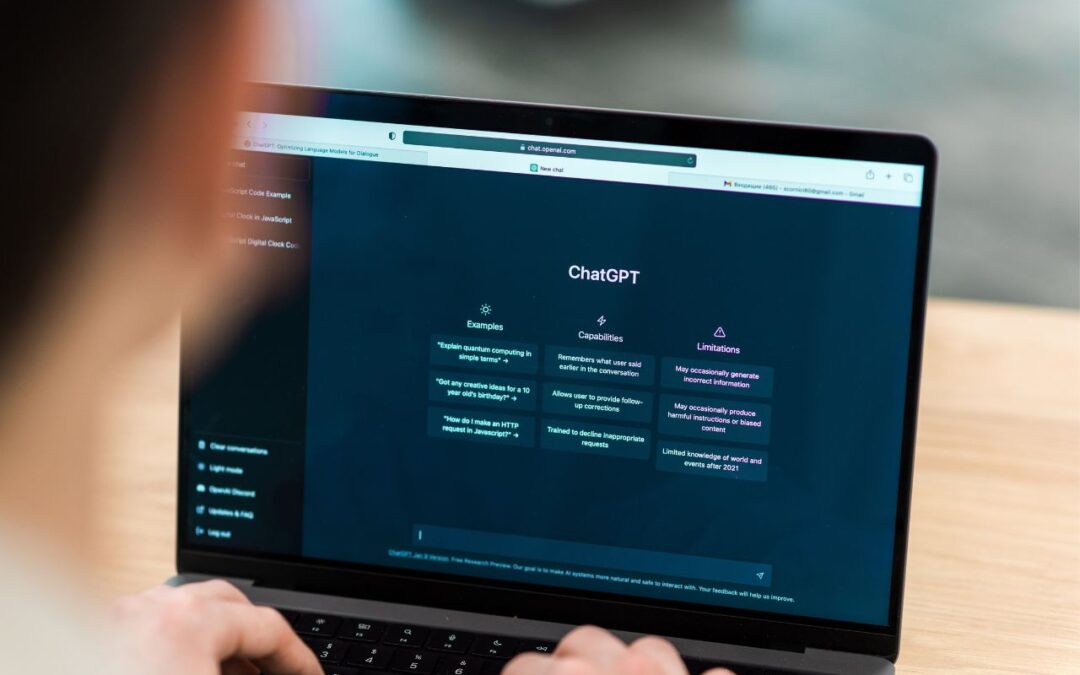By processing historical price action, technical indicators, and real-time news, ChatGPT highlights likely outcomes like whether momentum pints to bullish breakout or a correction.
The worlds of artificial intelligence (AI) and cryptocurrency are rapidly converging, creating a new wave of innovation across finance and technology.
From AI-driven trading bots and predictive analytics to blockchain-powered data security and decentralized AI marketplaces, this fusion is transforming the way digital assets are created, managed, and valued. As these two disruptive forces align, the crypto industry is beginning to unlock smarter, faster, and more secure solutions for the future of Web3.
Introduction: AI Meets Crypto
The growing interest in using AI models, such as ChatGPT, for bitcoin (BTC) predictions stems from a combination of technological advancements and the inherently unpredictable nature of the cryptocurrency market.
BTC is highly volatile, influenced by numerous factors, including market sentiment, regulatory changes, macroeconomic conditions, and even social media trends. Traditional analysis methods often struggle to capture this complexity, prompting traders and investors to turn to AI for deeper insights.
Models like ChatGPT can process massive amounts of information much faster than any human could. Because market sentiment plays such a significant role in BTC price swings, AI’s ability to detect mood shifts in online discussions or breaking news is particularly valuable.
Another reason for the interest is accessibility. ChatGPT does not require users to be expert data scientists to ask questions and get market-related insights. This makes advanced analysis tools more approachable to retail investors, not just institutional traders.
There’s also an element of experimentation. The crypto community is generally tech-forward, and many enthusiasts are curious about blending AI with blockchain. Some are even integrating AI into automated trading bots, creating strategies that adapt in real time.
At the same time, AI models like ChatGPT don’t actually predict markets with certainty. They identify trends, analyze information, and provide context. This can be useful for decision-making, but it doesn’t eliminate the risks of speculation in such a volatile market.
How ChatGPT Works
ChatGPT works by analyzing the text you provide as input, breaking it down into patterns it has learned during training. Instead of searching the internet, it relies on knowledge gained from vast amounts of books, articles, code, and online content it was trained on.
Using the GPT-4 architecture, it predicts the most likely words and phrases to follow in context, allowing it to generate fluent, human-like responses. This process helps it understand questions, maintain conversation flow, and produce answers that feel natural and relevant.
ChatGPT’s operations differ slightly from everyday AI agents such as those used in the cryptocurrency industry. You can learn how to create your first AI crypto agent, and how it differs from a power model such as ChatGPT.
Strengths of ChatGPT in Crypto Forecasting
While the AI tool relies on existing information to produce answers, ChatGPT brings several strengths to crypto forecasting by combining data interpretation with real-time information analysis and sentiment evaluation. It can examine historical data, spotting price patterns, market cycles, and technical indicators in a way that makes them easier to understand and apply.
Additionally, beyond charts and numbers, it excels at summarizing news from multiple sources. It filters the most relevant updates, such as regulatory changes, institutional moves, or major exchange developments, and presents them clearly without overwhelming the reader.
Another strength lies in its ability to highlight market sentiment and top cryptocurrencies that could make waves. By assessing the tone of headlines, community discussions, and social media activity, ChatGPT helps reveal whether the broader mood is optimistic, fearful, or uncertain.
Together, these capabilities allow it to provide balanced insights that merge past performance, current events, and collective psychology into a clearer picture of where the crypto market might be heading.
Limitations of AI in Market Predictions
Like every other technology and product, AI also has apparent limitations when it comes to making market predictions, especially in areas as volatile as crypto.
While it can process large amounts of data, past performance does not guarantee future results, and AI models often rely heavily on historical patterns that may not hold in unpredictable markets. They struggle with sudden shocks, such as regulatory crackdowns, geopolitical crises, or major hacks, which can drastically shift prices beyond what data models anticipate.
Another significant limitation is the quality and bias of data. If the input sources are incomplete, outdated, or skewed, the AI’s forecasts will reflect those flaws. AI also tends to miss the emotional and irrational aspects of human behavior that drive markets, such as panic selling or speculative hype, which cannot always be captured in charts or sentiment analysis.
Ultimately, AI does not possess accurate foresight. It interprets information rather than predicting with certainty. Its outputs should be seen as guidance or probability estimates, not guarantees. It is also worth noting that relying solely on AI without human judgment and broader market awareness can lead to risky decisions.
Comparing ChatGPT to Traditional Analysis
While ChatGPT plays a crucial role in key areas, it differs from traditional analysis methods; however, it works best as a complement rather than a replacement.
Traditional tools, such as technical analysis, on-chain data, and macroeconomic research, provide structured insights derived from charts, blockchain activity, and global financial trends. ChatGPT, on the other hand, adds value by synthesizing these perspectives into a clearer, more accessible picture.
When combined with technical analysis, ChatGPT can help traders interpret patterns and indicators, translating complex chart signals into plain language and even offering historical context on similar setups. With on-chain data, which can be highly technical and fragmented, AI can summarize key metrics such as wallet flows, transaction volumes, or whale activity, making them more digestible for both beginners and advanced traders.
In macro research, where regulations, global events, and monetary policy drive crypto markets, ChatGPT’s strength lies in quickly scanning and summarizing large amounts of news and reports to highlight potential implications for digital assets. Meanwhile, here is how to create your first AI crypto agent.
By blending these capabilities, AI offers a layer of context and interpretation that supports, rather than replaces, traditional methods. It helps filter noise, connects the dots between different types of analysis, and provides traders with a more comprehensive perspective for making decisions in fast-moving markets.
Real-World Examples
There are times ChatGPT’s analysis missed the mark. This is also part of an example where one can’t entirely rely on AI’s information without thorough research.
Short-Term CPI & Macro Reactions:
- When asked about inflation print days, ChatGPT often assumed that BTC would mirror equities, exhibiting sharp volatility.
- Reality: BTC sometimes moved in the opposite direction (e.g., rallying despite hot CPI prints), showing that short-term trader psychology and liquidity often outweighed textbook macro logic.
The Consumer Price Index (CPI) is a measure of inflation that influences crypto market sentiment and asset values. A rising CPI signals inflation, potentially leading investors to seek assets like BTC as a hedge, while CPI-driven interest rate hikes can negatively impact crypto.
Exchange Traded-Fund (ETF) Approval Day (January 2024):
- ChatGPT suggested that approval would trigger an immediate and strong rally.
- Reality: While BTC had run up in anticipation, the actual approval day saw a dip, catching many off guard before resuming an uptrend.
Risks of Relying on AI
There are several risks associated with solely depending on AI, such as:
- False Sense of Security:
Over-reliance on AI can make traders complacent, assuming the system “knows best.” This may lead to overlooking critical factors, such as global events, regulations, or shifts in sentiment, that AI might miss.
- Market Manipulation & Noise:
AI can misinterpret pump-and-dump schemes, fake news, or manipulated data as real signals, resulting in significant losses.
- Technical & System Failures:
Bugs, downtime, or API errors can cause AI trading systems to malfunction. Without human oversight, this can result in significant financial damage.
- Lagging Data & Delays:
AI often relies on past data to predict future outcomes. In fast-moving markets, this delay can cause you to react too late. However, it is essential to DYOR (Do Your Own Research) to avoid relying entirely on the results of AI. There are compelling reasons why conducting your own research is crucial.
- Critical Thinking:
Conducting your own research helps you validate whether the AI’s signals align with fundamental trends, sentiment, and real-world events.
- Balanced Decision-Making:
Combining AI insights with your own research creates a more resilient strategy. It reduces the risks of blindly following algorithms.
- Context Matters:
AI can crunch numbers, but it does not understand your personal risk tolerance, financial goals, or the broader market context as well as you do.
- Accountability:
At the end of the day, it is your money. DYOR ensures you take responsibility for trades rather than shifting blame to a tool.
The Future of AI in Crypto
The future of AI in crypto is likely to move far beyond simple trading bots and predictive models, evolving into highly adaptive, personalized systems that transform how traders interact with markets.
Smarter market analysis will be a major shift. Instead of relying solely on historical charts or news sentiment, AI will integrate on-chain data, macroeconomic analysis, and real-time global events to provide predictive insights. These models won’t be static; they will continuously learn and adapt as new information emerges, helping traders stay ahead of sudden volatility.
Moreso, AI-powered assistants will become a trader’s co-pilot. They may understand an individual’s risk tolerance, preferred strategies, and portfolio goals, offering tailored suggestions on entries, exits, and asset allocation. With natural voice and chat interfaces, a trader could ask, “What’s the safest long-term play this week?” and get an explainable response.
Risk management will also become more intelligent. Instead of fixed stop-losses, AI systems will automatically adjust exit points based on liquidity and volatility. They could even place hedging trades across multiple exchanges, reducing exposure to sudden downturns.
On-chain intelligence will evolve as well. AI will track wallet behaviors, detect unusual whale activity, and flag suspicious flows before they ripple through the market. In decentralized finance (DeFi), smart contract vulnerabilities or potential rug pulls could be identified proactively, giving traders early warnings.
Furthermore, a regulatory and ethical layer will inevitably emerge. As governments demand transparency, explainable AI will allow traders and regulators to see why a decision was made. Compliance tasks, like tax reporting, KYC checks, and cross-border regulations, could also be automated, reducing the friction for traders.
Additionally, AI may adapt to a post-quantum world, helping develop strategies that remain secure against new computing threats. Decentralized AI networks, trained on blockchain data, could emerge as open, community-driven intelligence platforms, offering censorship-resistant trading tools.
Overall, the role of ChatGPT in predicting bitcoin’s next move is shifting from passive analysis toward active partnership. This tool not only predicts markets but also manages risk, optimizes opportunities, and ensures traders operate in a compliant and transparent environment.






